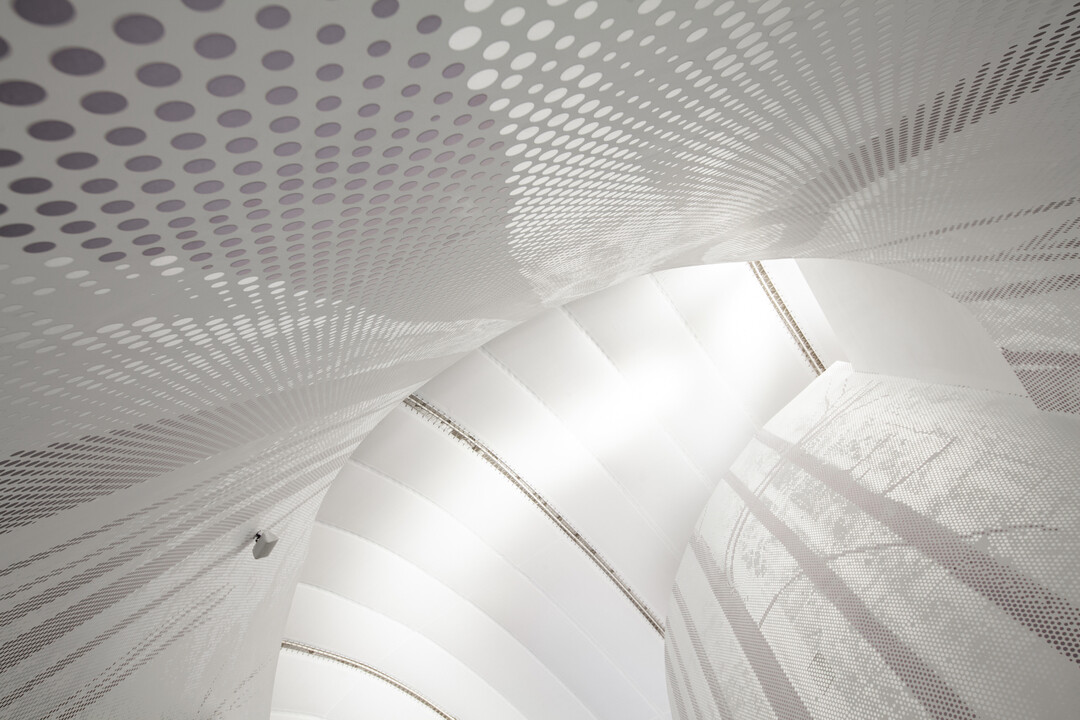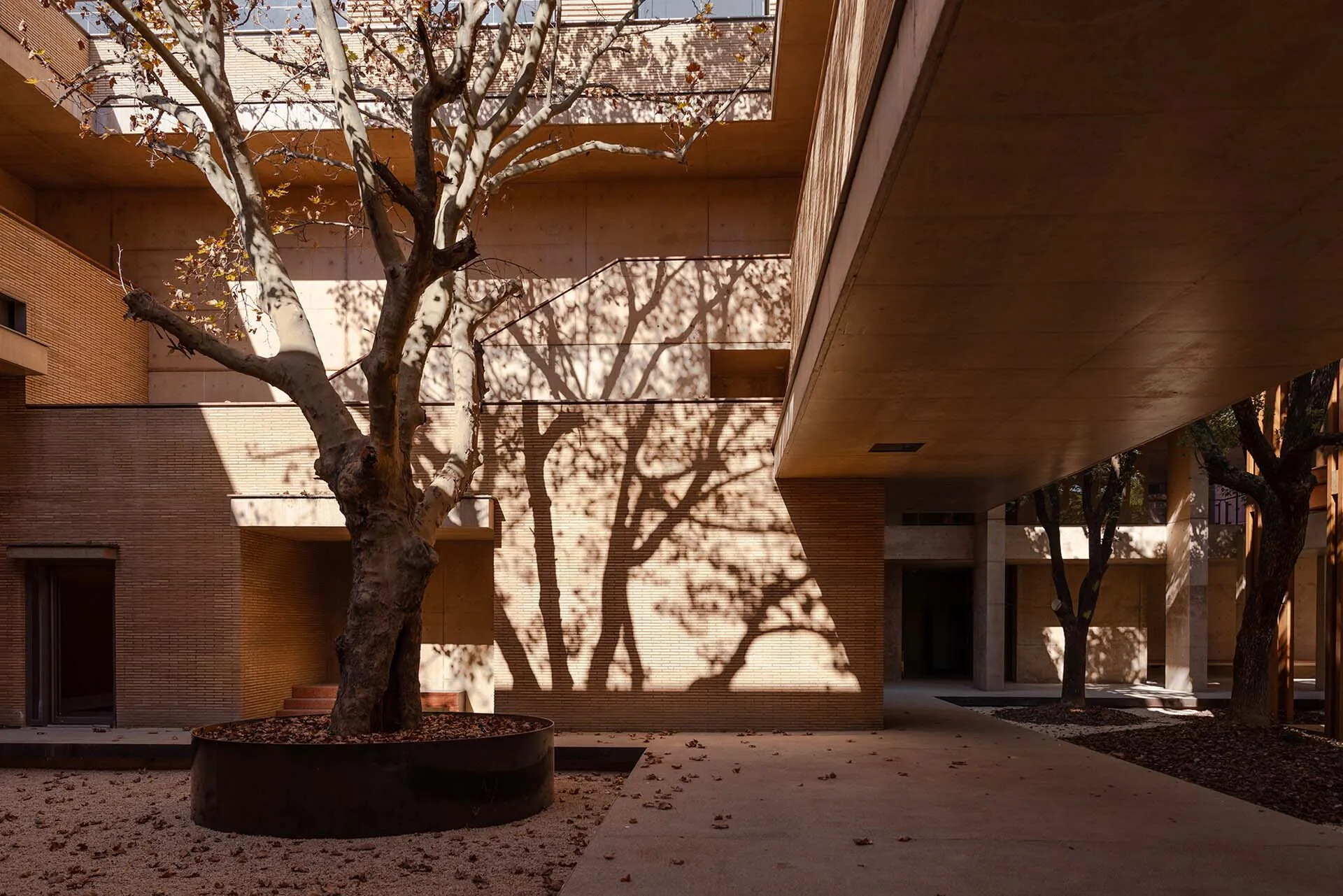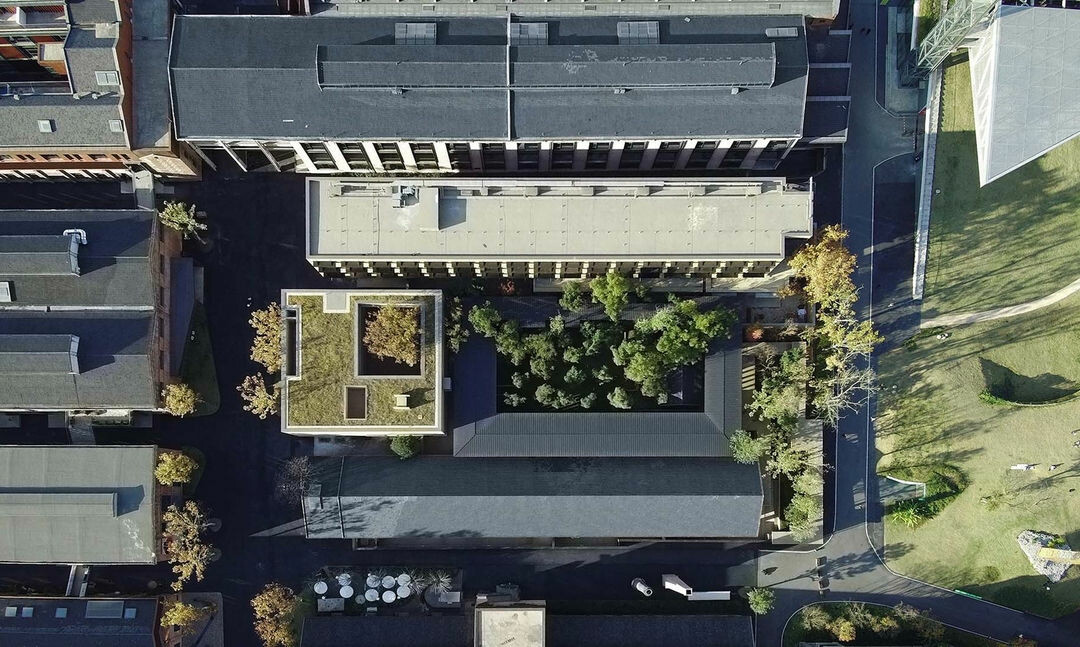
Members Only
Please join as a member and click "Members Only" to read more complete articles and exclusive content.

Please join as a member and click "Members Only" to read more complete articles and exclusive content.

景仰書院
位於景德鎮的陶溪川,是溫潤的瓷、細緻工藝和歷史磚紅所堆砌的地區。過去繁忙的窯燒場景,在翻頁的歷史中逐漸安靜下來,然而此地具有發展潛力的文藝能量,在歷史城市保護發展計畫中,以兼具保存與改造的方式,迎接更多嶄新可能。身為飯店的景仰書院,在這股創生的浪潮中落成,建築以群落方式凝聚陶溪川的新與舊,也在敞開與圍塑之間,鋪敘了此地未來的各種面貌。
飯店所在地點,是相鄰陶瓷廠的荒廢水泥地堆料場,承載了業主十幾年的工作回憶。業主劉子力曾是景德鎮多個國營瓷廠的老廠長,如今即便廠房已廢棄不用,他仍心繫這片場地的未來,在與清華大學建築學院張杰教授團隊合作下催生陶溪川文創街區。對於景仰書院有著深刻期待的業主,認為這裡不僅是一處提供休憩的飯店空間,部分區域還可以作為園區文化交流的客廳,因此期許建築空間能在兼具敞開的姿態中,與園區串連為一個互動式的群落。
第一次造訪此處的董功建築師,很快地便與業主達成共識,除了留下三座廠房、一座倉庫等空間,也在不砍伐任何一株樹木的情況下,盡可能地維持曾見證此地製陶歷史的香樟樹和梧桐樹群。呼應著周圍老廠房的磚牆,景仰書院中的新建築,採用客製磚體構築而成。此磚體為比照景德鎮當地的燒窯磚尺寸製作,顏色上則精心挑選土地色調的暖褐色,鋪墊柔和的氣息,使酒店建築在一片歷史建築群的強勢磚紅色中,低調、安靜的存在著。而今層疊而起的磚牆,在陽光照耀下呈現立體的光影,如穿越時空般地呼應著歷史,在現代設計的思量中扣合此地的工藝精神。

景仰書院以三十多棵香樟樹作為中心展開設計,圍繞、穿梭於樹群的木構迴廊,提供人們更貼近自然場景的路徑。而設計過程中,如何不移動樹群當中的任何一棵,並讓木欄以退讓、鑿洞的方式悉心護樹,如同進行手術般精準地調整樹與環境的關係,成為直向建築設計的關鍵。如今隱入林子的流線廊道不僅是人們步入大廳前沉澱思緒的場域,也是串接各功能空間的中心。人們在移動中,以身體感知從工業廠房過渡為日常街巷的尺度,也為陶溪川注入更為柔軟的感官體驗。
圍繞中央院子延伸而出的客房區,位於北面、樟樹群深處,橫列的一字形新建築面向著蓊鬱綠意,各層樓對外的陽台也因樹群高度的不同,能各自欣賞著樹冠、遠山等不同景觀,同時保有隱私。南面的餐廳和大廳由老倉庫整修完成,在翻修落架後,以鋼桁架延續原始木桁架的形式,繼續述說著空間的記憶。一如業主的期待,景仰書院重現昔日製陶工業的人文意蘊,亦是一處融入戶外與樹共生、讓心靈尋得恬淡的寧靜場域。